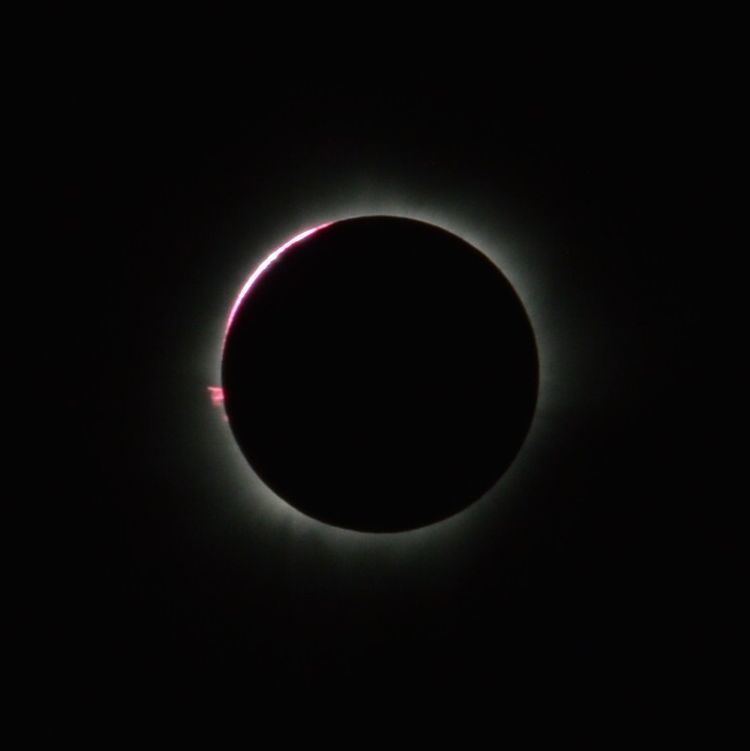 | ||
The Baily's beads effect is a feature of total solar eclipses. As the moon "grazes" by the Sun during a solar eclipse, the rugged lunar limb topography allows beads of sunlight to shine through in some places, and not in others. The name is in honor of Francis Baily who provided an exact explanation of the phenomenon in 1836. The diamond ring effect is seen when only one bead is left; a shining diamond set in a bright ring around the lunar silhouette.
Lunar topography has considerable relief because of the presence of mountains, craters, valleys and other topographical features. The irregularities of the lunar limb profile (the "edge" of the Moon, as seen from a distance) are known accurately from observations of grazing occultations of stars. Astronomers thus have a fairly good idea which mountains and valleys will cause the beads to appear in advance of the eclipse. While Baily's beads are seen briefly for a few seconds at the center of the eclipse path, their duration is maximized near the edges of the path of the umbra, reaching 1–2 minutes.
It is not safe to view Baily's beads or the diamond ring effect without proper eye protection because in both cases the photosphere is still visible.
Although Baily is often said to have discovered the cause of the feature which bears his name, Edmond Halley described and correctly ascertained the cause of the effect in 1715 after that year's eclipse. In his "Observations of the late Total Eclipse of the Sun[...]" in the Philosophical Transactions of the Royal Society, Halley wrote that:
"About two Minutes before the Total Immersion, the remaining part of the Sun was reduced to a very fine Horn, whose Extremeties seemed to lose their Acuteness, and to become round like Stars ... which Appearance could proceed from no other Cause but the Inequalities of the Moon's Surface, there being some elevated parts thereof near the Moon's Southern Pole, by whose Interposition part of that exceedingly fine Filament of Light was intercepted."
In media
Cosmas Damian Asam was probably the earliest realistic painter to depict a total solar eclipse and diamond ring. His painting was finished in 1735.
The Baily's beads phenomenon is seen during the credit opening sequence of the NBC TV show Heroes, while the Diamond Ring effect is seen during the credit opening sequence of Star Trek: Voyager, albeit from a fictitious extrasolar body, seen from space.
